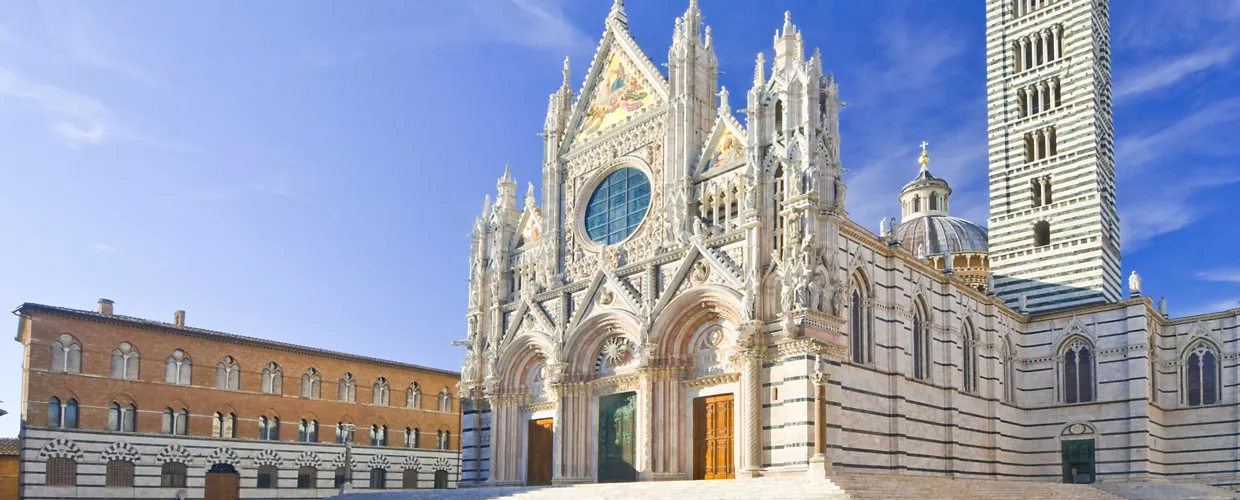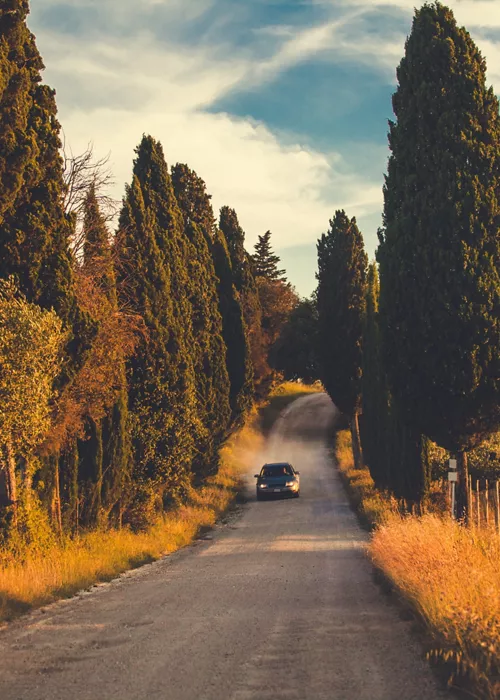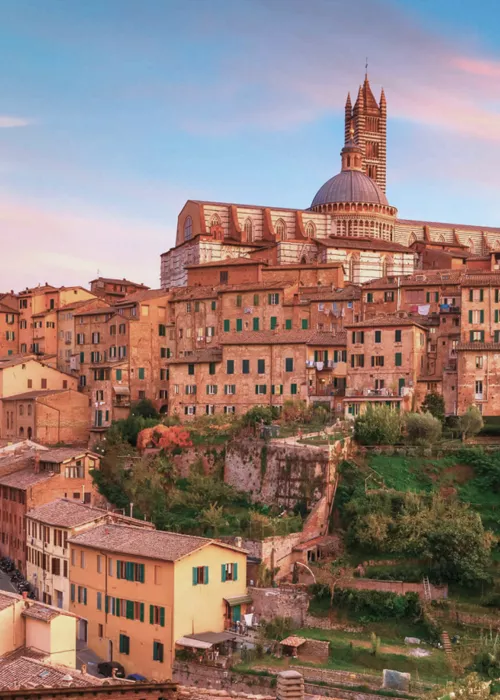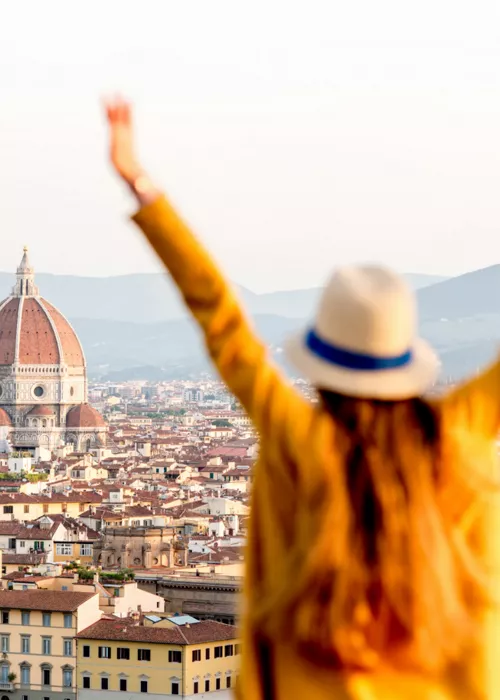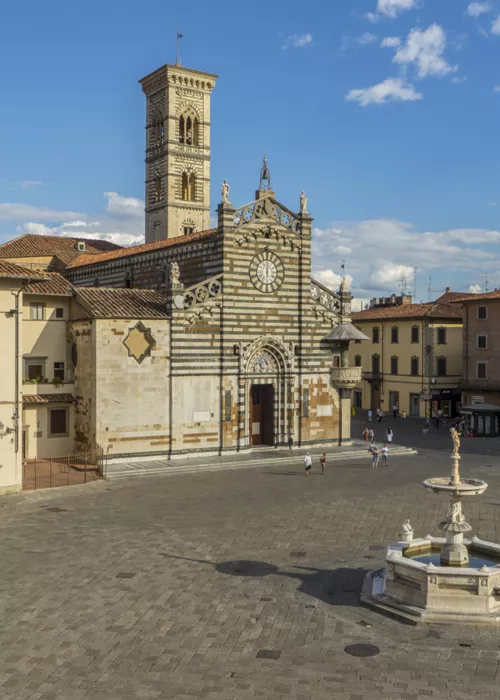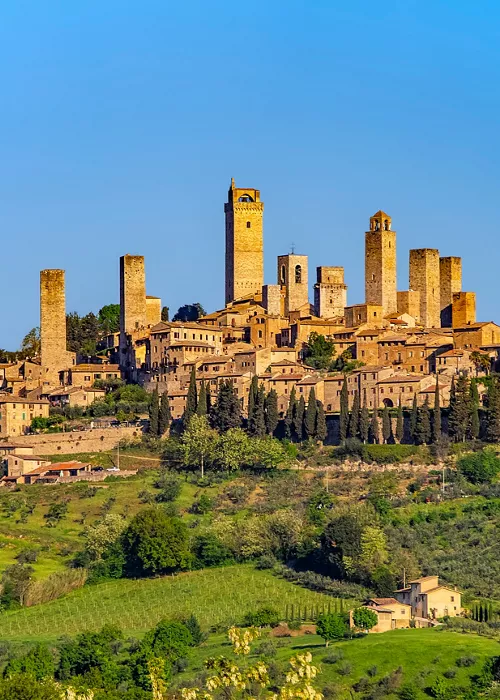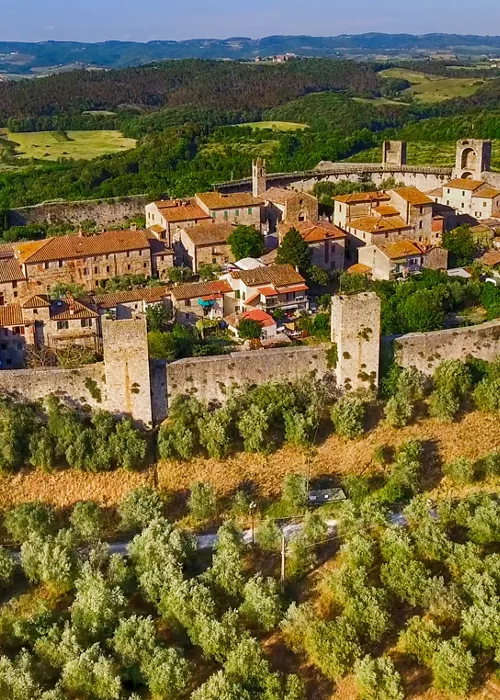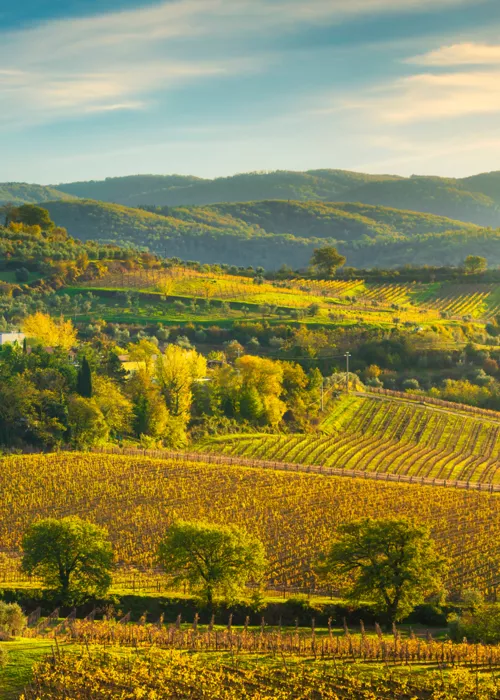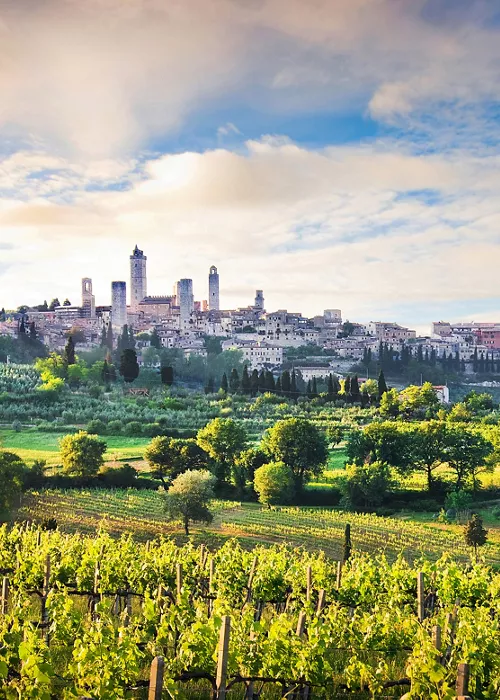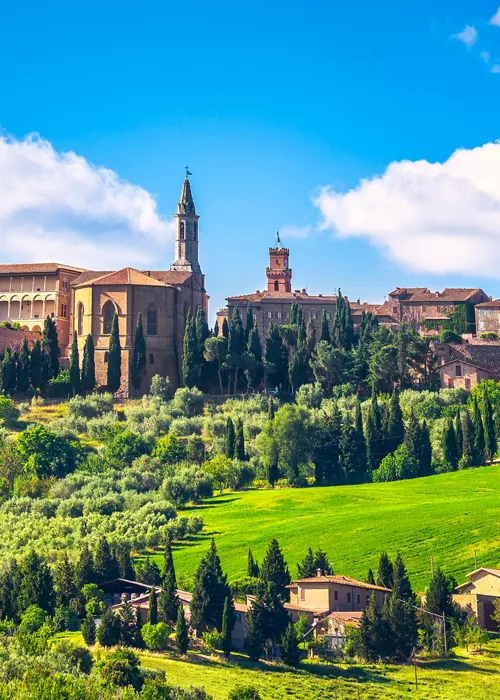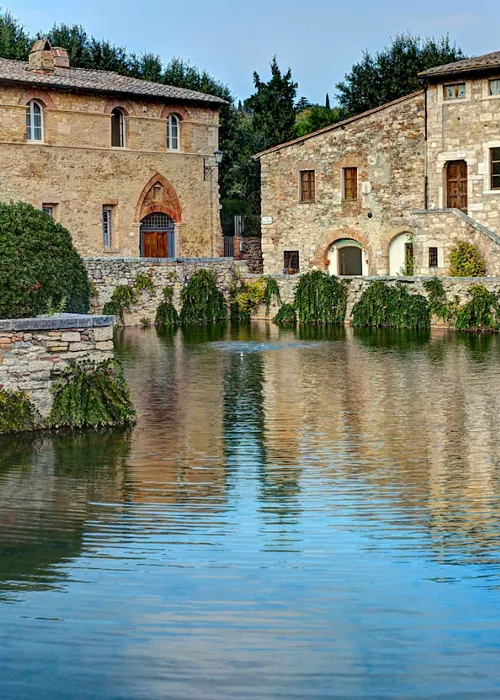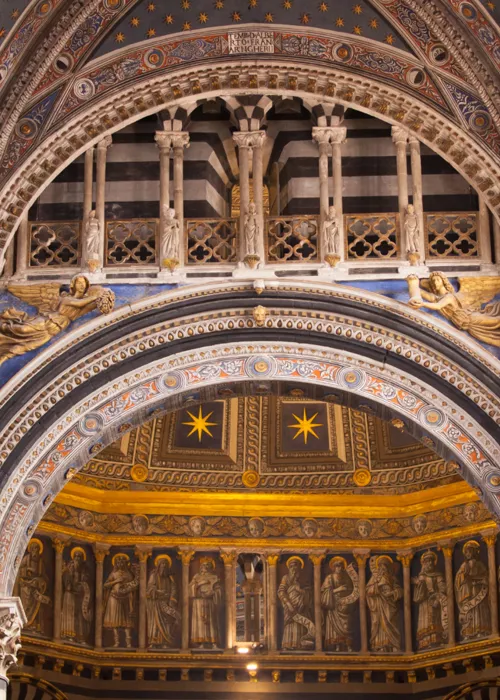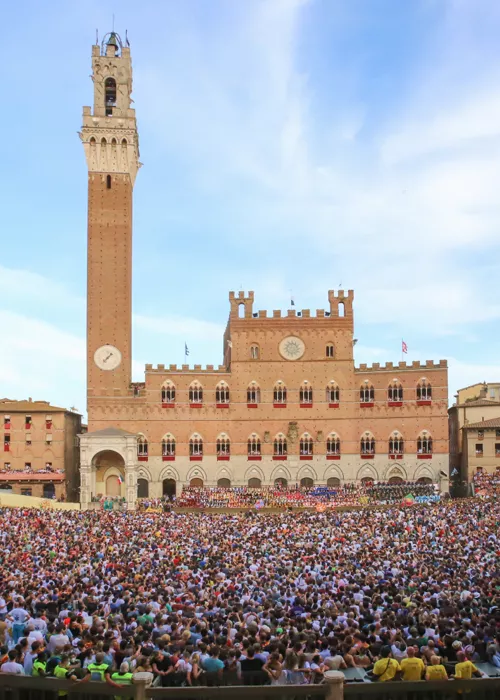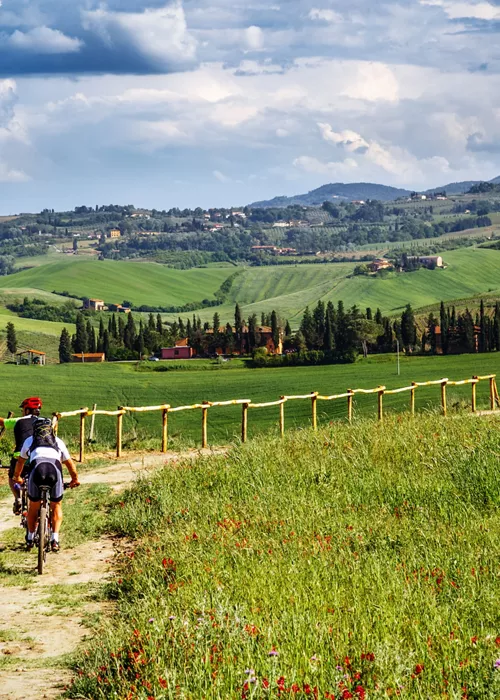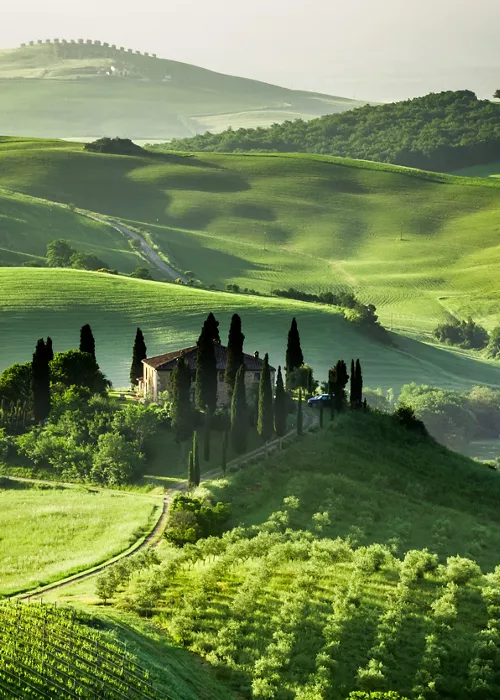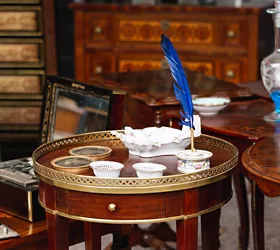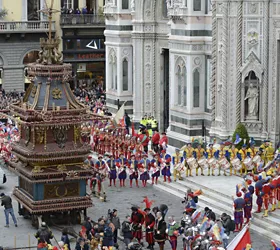"Treasure chest" of artistic beauty from Medieval to Renaissance
The Metropolitan Cathedral of Santa Maria Assunta, Siena’s Cathedral, is one of the most significant and magnificent examples of Italian Romanesque-Gothic style, artistic "gem" to discover. It is located in the city centre’s Piazza del Duomo.
From historical records, construction likely began in the first half of the 12th century AD, ending in the late 14th century, on a pre-existing church from the 9th century AD, which had been built on an earlier site, probably the Temple of Minerva. According to tradition, the Cathedral of Siena was consecrated in 1179 before Pope Alexander III, a Sienese.
It features a Latin cross structure, three aisles and hexagonal dome.
A Romanesque-Gothic style “jewel”, its interior filled with many "delights"
The greatest sculptors of every era, starting from the Middle Ages, have worked in the Cathedral of Siena. There are pieces by Nicola and Giovanni Pisano, Donatello, Michelangelo and Bernini. The masterpieces of art housed inside include the pulpit by Nicola Pisano (1265-68), with an octagonal layout, located in the left transept, one of the most important and representative sculptural works of 13th century Italy. The Piccolomini Library, with a cycle of frescos by Pinturicchio and his studio, along the left aisle, after the altar, built by Cardinal Francesco Todeschini Piccolomini (later Pope Pius III) to house the lavish collection of books collected by his uncle Pope Pius II. But the most spectacular piece of work to be admired in the Cathedral of Siena is the floor made with the technique of marble and “graffiti”, also lauded by Giorgio Vasari, who described it as "the most beautiful... great and magnificent that has ever been made". Each of the 56 panels, called "tarsias", was designed by masters from the second half of the 14th century to the late 19th century, imitated by marble workers and sculpted by stonemasons in the splendid local coloured marble. It depicts the theme of the Revelation of Christ in the Holy Scriptures.
A more recent piece of work that deserves mention is the pipe organ made by the Pontificia Fabbrica d'Organi Commendatore Giovanni Tamburini in 1966, with electric transmission and 72 registers, using recycled material from phonic instruments of an earlier age.
In order to enjoy an impressive view of the exterior and the rich interior of the Cathedral of Siena, visitors access the Porta del Cielo via a staircase, a pathway through the attics and galleries of the Cathedral, which for centuries remained closed to the public.



